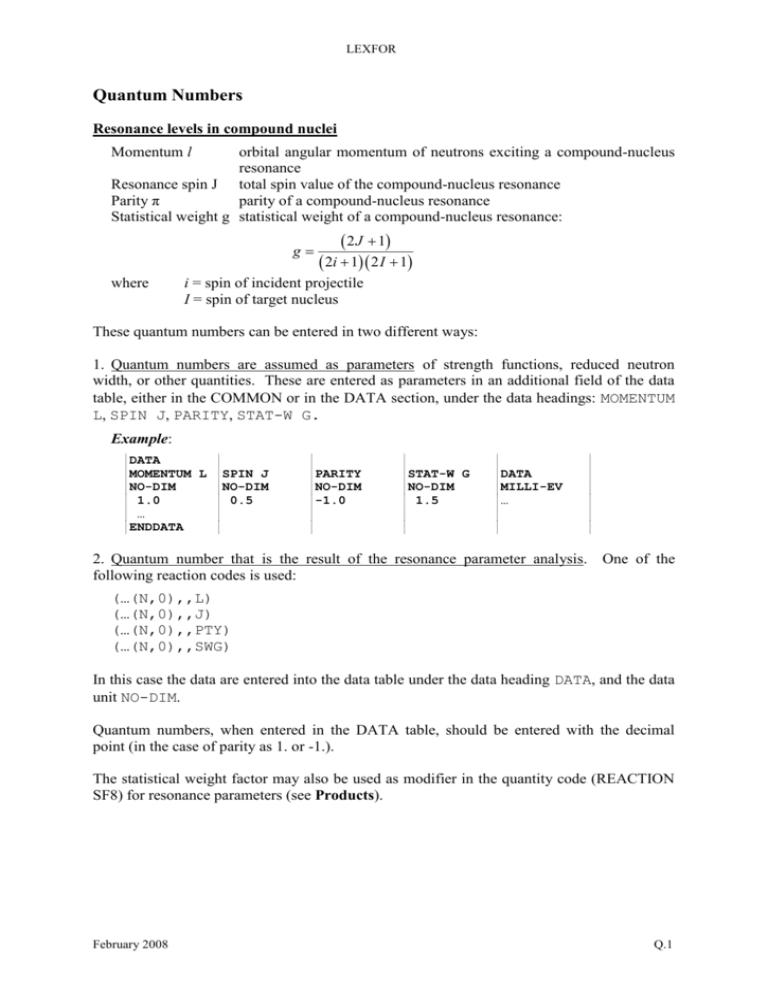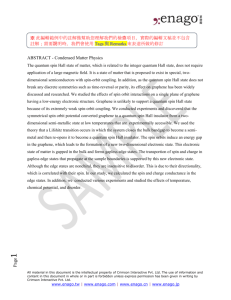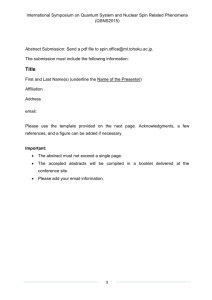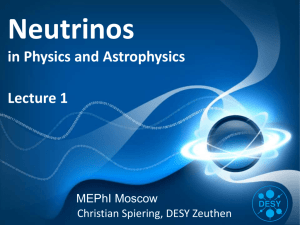Quantum Numbers
advertisement

LEXFOR Quantum Numbers Resonance levels in compound nuclei Momentum l orbital angular momentum of neutrons exciting a compound-nucleus resonance Resonance spin J total spin value of the compound-nucleus resonance Parity π parity of a compound-nucleus resonance Statistical weight g statistical weight of a compound-nucleus resonance: g where 2 J 1 2i 1 2 I 1 i = spin of incident projectile I = spin of target nucleus These quantum numbers can be entered in two different ways: 1. Quantum numbers are assumed as parameters of strength functions, reduced neutron width, or other quantities. These are entered as parameters in an additional field of the data table, either in the COMMON or in the DATA section, under the data headings: MOMENTUM L, SPIN J, PARITY, STAT-W G. Example: DATA MOMENTUM L NO-DIM 1.0 … ENDDATA SPIN J NO-DIM 0.5 PARITY NO-DIM -1.0 STAT-W G NO-DIM 1.5 DATA MILLI-EV … 2. Quantum number that is the result of the resonance parameter analysis. One of the following reaction codes is used: (…(N,0),,L) (…(N,0),,J) (…(N,0),,PTY) (…(N,0),,SWG) In this case the data are entered into the data table under the data heading DATA, and the data unit NO-DIM. Quantum numbers, when entered in the DATA table, should be entered with the decimal point (in the case of parity as 1. or -1.). The statistical weight factor may also be used as modifier in the quantity code (REACTION SF8) for resonance parameters (see Products). February 2008 Q.1 LEXFOR Quantum Numbers (continued) Excited states in product nuclei (see also Isobaric Analog Resonances). When an excited state is defined in a reference by its quantum numbers: spin J the spin value of a level in a product nucleus, parity π the parity of a level in a product nucleus, these quantum numbers may be entered in the BIB section under the keyword LEVEL-PROP to define the level for which the data are measured (see also EXFOR Exchange Formats Manual Chapter 7, LEVEL-PROP). These properties may be associated with specific data lines in one of the following ways. 1. Through the level energy (which may be assigned by the compiler). Example: BIB LEVEL-PROP ENDBIB NOCOMMON DATA EN MEV 1. 1. 2. ENDDATA (26-FE-56,E-LVL=0.845,SPIN=2.,PARITY=+1.) (26-FE-56,E-LVL=2.085,SPIN=4.,PARITY=+1.) E-LVL MEV 0.845 2.085 0.845 DATA MB … … … 2. Through the level number (which may be assigned by the compiler). Example: BIB LEVEL-PROP ENDBIB NOCOMMON DATA EN MEV 1. 2. 1. ENDDATA (26-FE-56,LVL-NUMB=1.,SPIN=2.,PARITY=+1.) (26-FE-56,LVL-NUMB=2.,SPIN=4.,PARITY=+1.) LVL-NUMB NO-DIM 1. 1. 2. DATA MB … … … 3. Using flags. Example: BIB LEVEL-PROP ENDBIB NOCOMMON DATA EN MEV 1. 2. 1. ENDDATA Q.2 ((1.)26-FE-56,,SPIN=2.,PARITY=+1.) ((2.)26-FE-56,,SPIN=4.,PARITY=+1.) DATA MB … … … … LVL-FLAG NO-DIM 1. 1. 2. February 2008 LEXFOR November 2005 Q.1









